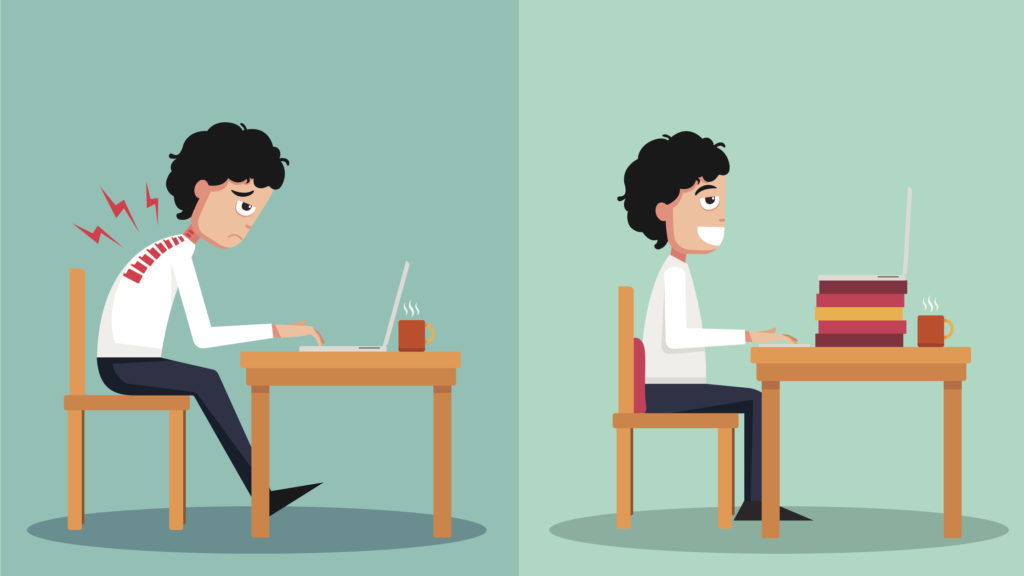Dr Eng Soo Kiang is a Fellow in Family Medicine and is a Council Member of the College of Family Physicians Singapore. He is also the Associate Medical Director of NTUC Health’s Unity Family Medicine Clinic. Any extracts should be attributed back to the author. 13 April 2018.
Office workers typically spend an average of six to seven hours a day sitting at their workstations.
Such a sedentary work habit could expose them to many health issues such as a stiff neck, backache and carpal tunnel syndrome.
One way to prevent these conditions is to improve your body posture. Here are several methods you can adopt to turn your office health around.

-
Do not slouch
Often, when we are overly engrossed on what’s on our laptop or monitor screen, we may unknowingly slouch forward.
The bad posture could result in stiff necks, shoulders and lower back pain. To check your body posture, you can set the alarm every 30 minutes to remind you to sit upright.
Your lower back should be fully supported by the backrest of the chair or cushion.
-
Do not risk your wrists
The ideal position when typing is when the keyboard is at a level where your wrists are not bent upwards. The wrists should be in a relaxed position to prevent strain when typing for a long period.
-
Keep feet on the ground
When seated, your feet should touch the office floor.
Dangling your feet may affect your lower back.
The back of your knee should also be tucked in comfortably near the edge of the chair. This can help to stabilise your lower back.
-
Stand up
According to a study done by NUS Saw Swee Hock School of Public Health and NUS Business School, sitting down for an average of seven hours or more could increase one’s risk of developing diabetes.
Other research has also linked sitting down for long periods of time with obesity, increased blood pressure and high blood sugar.
Hence, it is recommended that you set the alarm for every 30 to 40 minutes to remind you to stand up for your health.
-
Redesign the way/place you work
Changing the way you position your body when working can also help improve your health and body posture. You can:
- Switch to sitting on a high stool for tasks like meetings or working lunch.
- Set up a standing station or even better, one with an adjustable height for you to change throughout the day. Vary your posture depending on the type of work you are doing.
-
Don’t lose your sights
Did you know that at times when we are too focused on our work our eyes blink less than we should?
Looking at your monitor screen for too long will tire your eyes and lead to dry eyes.
Try blinking your eyes for 15 to 20 times continuously after every 15 to 20 minutes of screen time or step away from your desk to look out of a window at distant objects for a few minutes. You may also, in the process, reduce your risk of myopia.

